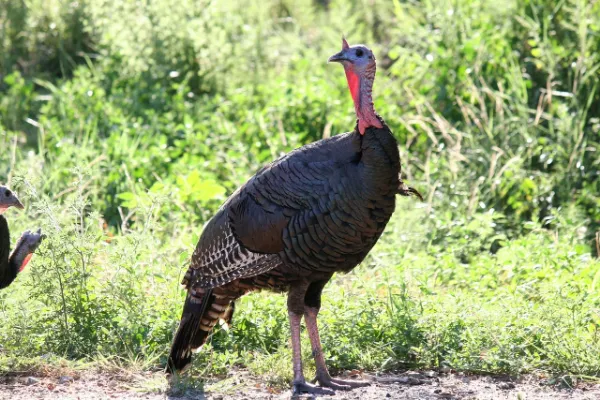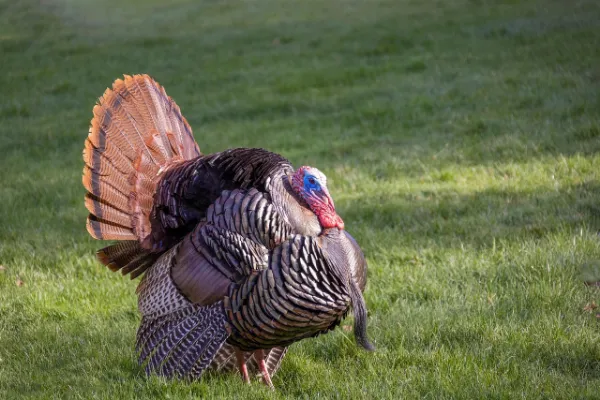The Ultimate Guide to Turkey Hunting with Decoys
Tips, Techniques, and Strategies for Success
Turkey hunting is one of the most exciting and challenging pursuits for outdoor enthusiasts and hunters. Known for their keen senses and wary nature, wild turkeys demand skill, patience, and strategy. One of the most effective methods to increase your chances of bagging a turkey is using decoys.
In this guide, we’ll present everything you need to know about turkey hunting with decoys—from understanding turkey behavior and choosing the right decoys to setting up your blind and calling techniques.

Why Use Decoys in Turkey Hunting?
Decoys are lifelike replicas of turkeys designed to attract real birds within shooting range. When used effectively, decoys can dramatically improve your chances of a successful hunt by:
- Drawing turkeys closer: Turkeys are territorial and curious birds. A well-placed decoy can provoke a dominant tom to investigate or challenge.
- Enhancing calling effectiveness: Decoys add a visual cue that complements your vocalizations, making your calls more convincing.
- Controlling turkey movement: With decoys, you can direct a turkey’s approach, making your shot easier and safer.
- Reducing turkey suspicion: Turkeys often hesitate to respond to calls alone, but seeing another bird can reassure them and encourage movement.
Understanding Turkey Behavior to Use Decoys Effectively
Before deploying decoys, it’s essential to understand wild turkey behavior, especially during the spring breeding season:
- Dominant Toms (Gobblers): These males are aggressive and territorial, often trying to dominate other males and impress hens.
- Subordinate Toms: Younger or less dominant males who may avoid confrontation.
- Hens: Female turkeys interested mainly in mating and nesting.
Dominant toms are usually the primary target of decoy setups, as they will aggressively confront rival males or approach hens. Turkeys tend to be cautious and watchful, so decoy placement and realism are crucial.
Types of Turkey Decoys
Choosing the right decoy depends on the situation and your hunting style. Here are common types:
1. Hen Decoys
- Purpose: Attract dominant toms looking for mates.
- Features: Usually in a feeding or relaxed posture, hens encourage toms to approach for courtship.
- Best Use: During the spring when toms are actively seeking hens.
2. Jake Decoys
- Purpose: Represent immature males and sometimes provoke dominant toms.
- Features: Smaller than tom decoys, jakes can trigger territorial aggression in mature males.
- Best Use: When you want to spark confrontation.
3. Tom Decoys
- Purpose: Simulate a rival gobbler to challenge a dominant tom.
- Features: Usually in a strutting or aggressive posture.
- Best Use: When you want to provoke aggressive responses or to position your blind between two decoys.
4. Strutting Decoys
- Show turkeys in full display with tail feathers fanned and wings lowered.
- Very effective at close ranges but might spook birds if overused.
- Great for aggressive calling and late-season hunting.
How to Choose Quality Turkey Decoys

- Realism: High-quality decoys with natural colors and accurate features are more convincing.
- Durability: Consider weather-resistant materials for long-lasting use.
- Portability: Lightweight and foldable decoys are easier to carry during hunts.
- Visibility: Some decoys feature 3D heads or movable parts for added realism.
Setting Up Turkey Decoys: Best Practices
1. Scout Your Hunting Area
Find turkey travel routes, feeding areas, roosting spots, and strutting zones. Position decoys in these key areas to maximize visibility.
2. Placement
- Distance: Set decoys about 20-30 yards from your blind or concealment.
- Angle: Place decoys at a slight angle to each other, mimicking natural behavior.
- Group Size: Use one to three decoys depending on your strategy (a single hen, hen + jake, or hen + tom setup).
- Height: Place decoys on ground with some natural cover to hide their base but keep them visible.
3. Common Decoy Setups
- The Hen Setup: Place one or two hen decoys on the ground to lure toms looking for a mate.
- The Jake Challenge: A hen decoy paired with a jake decoy to provoke dominant toms.
- The Tom Showdown: Two tom decoys positioned as rivals to incite aggression.
How Many Turkey Decoys Should You Use?
When it comes to turkey hunting, the number of decoys you use can significantly impact your results. While there’s no one-size-fits-all answer, most hunters find success using between one and three decoys. A single hen decoy can be effective in early season when gobblers are more responsive to subtle setups. A hen and jake combination works well to provoke dominant toms into confronting a perceived rival.
In high-pressure areas, less can often be more—too many decoys may appear unnatural and spook wary birds. Your setup should match the behavior and mood of turkeys in your area, the terrain, and your calling strategy. Test different setups and adjust based on turkey responses to find what works best for your specific hunting location.
Calling Alongside Decoys: Vocal Strategies
Decoys and calling go hand-in-hand to create a believable scene:
- Start Soft: Use gentle clucks and purrs to attract curious turkeys.
- Increase Intensity: Add yelps and cackles as turkeys get closer.
- Use Aggressive Calls: When a turkey approaches your decoys, employ gobbles or aggressive cuts to trigger a reaction.
- Listen and Adapt: Respond to the turkey’s behavior and change your calls accordingly.
Tips for Success When Hunting Turkeys with Decoys
- Patience is Key: Don’t rush shots; wait for the turkey to get within range and present a clean shot.
- Concealment: Use natural cover or a portable blind to stay hidden.
- Movement: Keep your movements minimal to avoid spooking birds.
- Wind Direction: Always hunt with the wind in your face so the turkey doesn’t pick up your scent.
- Practice Calling: Realistic calling is as important as realistic decoys.
- Know Local Regulations: Follow hunting laws regarding decoy use and hunting seasons.
Common Mistakes to Avoid
- Overusing Decoys: Too many decoys or unnatural placements can spook birds.
- Ignoring Weather: Rain or strong winds can affect turkey behavior and decoy effectiveness.
- Poor Decoy Maintenance: Dirty or damaged decoys lose realism.
- Inconsistent Calling: Overcalling or monotonous calls can alert turkeys.
Advanced Turkey Decoy Tactics
- Motion Decoys: Some decoys feature moving heads or strutting mechanisms powered manually or by batteries, increasing realism.
- Electronic Calls with Decoys: Pairing electronic calls and decoys can help simulate multiple birds.
- Blind Placement Between Decoys: Placing yourself between two decoys can create a territorial “battlefield” that lures aggressive toms to your position.
Can You Hunt Turkeys Without Decoys? Yes—Here’s How
Absolutely, you can hunt turkeys without using decoys, and many seasoned hunters prefer this minimalist approach. Hunting without decoys requires a deeper understanding of turkey behavior, precise calling, and strategic positioning. The key is to let your calls do all the work—drawing gobblers in with realistic yelps, clucks, and purrs while staying completely concealed.
Setting up along known travel routes, strut zones, or near roosting areas increases your chances of intercepting a curious or responsive tom. While you may miss out on the visual advantage decoys provide, going decoy-free can actually be less risky in high-pressure areas where turkeys have become suspicious of decoy setups. It’s a more challenging method, but incredibly rewarding when done right.
Wrap up
Turkey hunting with decoys is an art that blends knowledge of turkey behavior, patience, and skillful use of calling and setups. The right decoys can transform a quiet morning into an exciting encounter with a wild gobbler. Remember to scout thoroughly, practice your calls, and place your decoys thoughtfully to increase your odds of success.
Frequently Asked Questions (FAQ) About Turkey Hunting with Decoys
1. Why should I use decoys when turkey hunting?
Decoys attract wild turkeys by simulating real birds, encouraging curious or territorial toms to approach within shooting range. They also complement calling and help control the turkey’s movement, increasing your chances of a successful hunt.
2. What types of turkey decoys are best for hunting?
Common types include hen decoys (to attract dominant toms), jake decoys (to provoke aggression), tom decoys (to simulate rival gobblers), and strutting decoys (to showcase dominant display). Your choice depends on hunting conditions and strategy.
3. How many decoys should I use during a hunt?
Most hunters use between one and three decoys. A single hen or hen plus jake setup works well to attract toms. Overusing decoys can sometimes spook turkeys, so keep it natural.
4. Where should I place my decoys?
Position decoys about 20-30 yards from your blind or concealment, at slight angles to each other, mimicking natural turkey behavior. Make sure they’re visible but not overly exposed, ideally near turkey travel routes or feeding areas.
5. Do decoys really work for turkey hunting?
Yes, when combined with proper calling and good concealment, decoys are a proven method to lure turkeys closer and trigger territorial or mating responses.
6. Can I use motion or electronic decoys?
Absolutely! Motion decoys with moving heads or strutting features can be very effective by adding realism. Electronic calls paired with decoys can also simulate multiple birds and improve your chances.
7. What calling techniques work best with decoys?
Start with soft clucks and purrs to pique curiosity, then add yelps, cackles, and gobbles as turkeys approach. Match your calls to the behavior and distance of the birds for best results.
8. How important is concealment when using decoys?
Very important. Turkeys have sharp eyesight, so using natural cover or portable blinds helps keep you hidden while your decoys do their job.
9. Are there specific seasons when decoys are most effective?
Decoys are most effective during the spring breeding season when toms are actively seeking hens and defending territories. They can also be useful in fall and winter but require different tactics.
10. What are common mistakes to avoid when using turkey decoys?
Avoid overusing too many decoys, placing them unnaturally, poor maintenance, and inconsistent calling. Also, don’t ignore wind direction or turkey patterns in the area.
11. Can decoys help me hunt turkeys in heavily pressured areas?
Yes, decoys can give you an advantage by triggering reactions from wary turkeys in pressured zones, but it requires careful scouting and realistic setups.
12. Is it legal to use decoys for turkey hunting?
In most regions, yes, but always check your local hunting regulations and seasons to ensure compliance with decoy use.
Have you tried turkey hunting with decoys? Share your tips and stories in the comments below!
About the Author
Ana Milojevik is an avid outdoorswoman and experienced hunting enthusiast with a passion for waterfowl and game bird hunting. With years of hands-on experience in turkey hunting and wildlife conservation, Ana combines practical field knowledge with expert research to provide hunters with effective tips and strategies. When she’s not in the woods perfecting her decoy setups, Ana enjoys sharing her insights to help both novice and seasoned hunters improve their skills and connect with nature.